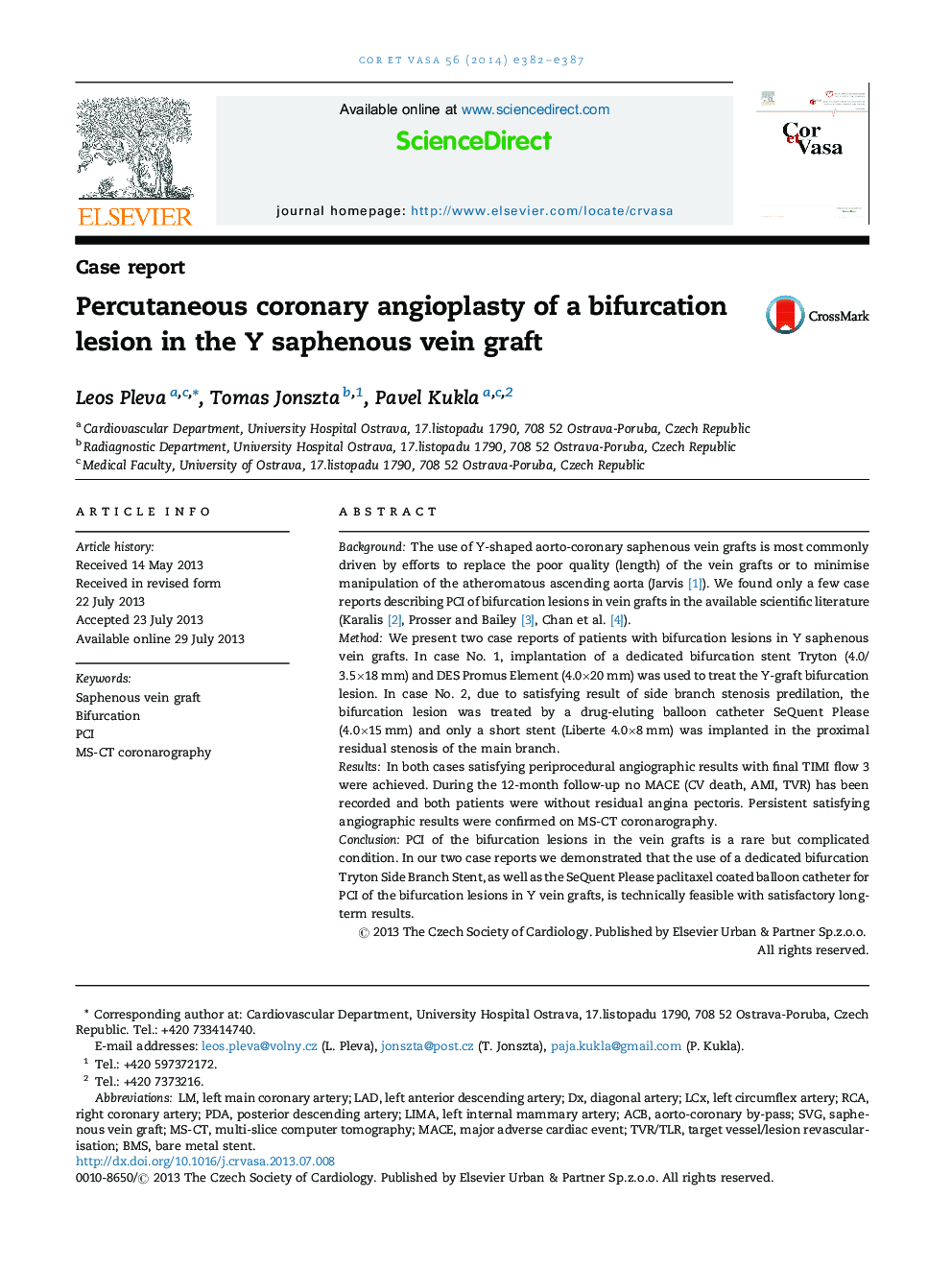| Article ID | Journal | Published Year | Pages | File Type |
|---|---|---|---|---|
| 2731492 | Cor et Vasa | 2014 | 6 Pages |
BackgroundThe use of Y-shaped aorto-coronary saphenous vein grafts is most commonly driven by efforts to replace the poor quality (length) of the vein grafts or to minimise manipulation of the atheromatous ascending aorta (Jarvis [1]). We found only a few case reports describing PCI of bifurcation lesions in vein grafts in the available scientific literature (Karalis [2], Prosser and Bailey [3], Chan et al. [4]).MethodWe present two case reports of patients with bifurcation lesions in Y saphenous vein grafts. In case No. 1, implantation of a dedicated bifurcation stent Tryton (4.0/3.5×18 mm) and DES Promus Element (4.0×20 mm) was used to treat the Y-graft bifurcation lesion. In case No. 2, due to satisfying result of side branch stenosis predilation, the bifurcation lesion was treated by a drug-eluting balloon catheter SeQuent Please (4.0×15 mm) and only a short stent (Liberte 4.0×8 mm) was implanted in the proximal residual stenosis of the main branch.ResultsIn both cases satisfying periprocedural angiographic results with final TIMI flow 3 were achieved. During the 12-month follow-up no MACE (CV death, AMI, TVR) has been recorded and both patients were without residual angina pectoris. Persistent satisfying angiographic results were confirmed on MS-CT coronarography.ConclusionPCI of the bifurcation lesions in the vein grafts is a rare but complicated condition. In our two case reports we demonstrated that the use of a dedicated bifurcation Tryton Side Branch Stent, as well as the SeQuent Please paclitaxel coated balloon catheter for PCI of the bifurcation lesions in Y vein grafts, is technically feasible with satisfactory long-term results.
